One of the most common things I hear when discussing healthy eating is that people can’t afford to eat healthy food. They have looked at the healthy options in the supermarkets and found that they cost more than what they’re currently buying. In some ways that’s true... organic vegetables are usually more expensive than non-organic ones, biscuits made with healthy ingredients cost more than the standard biscuits, and in general, pre-made products marketed as being healthy do cost more.
However, you can eat a healthy balanced diet on a budget! And let’s face it, with the cost of living going up and up, many of us are facing financial hardship.
As a mother with four young ones living at home and one who has left home but still requires support, these issues are on my mind. I’m always looking for new ways to balance nourishing my family and keeping the bills paid. I have found a structure that works for me and I’m happy to share what I have learned.
I use 5 tools to help keep my food costs down: 1) Cook from scratch, 2) bulk shop, 3) buy reduced, 4) batch cook, and 5) preserve and freeze. I implement these tools by planning ahead. It goes like this…
I get paid monthly so I have arranged for most of my outgoings to be paid monthly. When I get paid, the first thing I do is to pay my bills and other regular outgoings, then I do a bulk shop of all my whole foods. When shopping for fresh produce, I buy reduced, batch cook, preserve and freeze things to make them last longer. Now I’m going to break down how I do that and why.
Bulk Shop
When I get paid, I bulk shop my whole foods and store cupboard ingredients that will last the month. SOOO… rice, pasta, flour, oats, spices, salt, canned beans, canned tomatoes, dry legumes, honey, oil, sugar, jam, etc. There are two reasons for doing this: 1) I know that if I run out of money, my family can still eat that month, and 2) if I order whole foods in large quantities from a wholesale company the price per item is less. So that’s a monthly saving right there.
Cooking from Scratch
Ingredients cost less than ready-meals, takeaways, and premade snacks. When money is tight, I focus on what cheap healthy ingredients I can buy to feed my family. This kills two birds with one stone by immediately removing the cost of being cooked for, whilst also removing most additives such as preservatives, glucose syrups and other nasties that we would not consider adding to our family’s meals. Yes, it can take longer to cook homemade meals, but it doesn’t have to. It is faster to make a stir fry than to wait for a Chinese takeaway. And there are many 30 minute or less recipes available online, (soon I will dedicate a blog to home-cooked fast meals).
Buy Reduced
I love reduced-price food! Choose the shops that you want to shop from and check them regularly. Sunday afternoon before the supermarkets close and Monday mornings are great times to get bargains. I do a quick drive around my favourite shops when I have time, and get those bargains! Reduced meat, vegetarian meat alternatives, and many dairy products can be frozen when you get them home. I decide what fresh vegetables to use that week depending on what I can get at a good price. I usually go to my local organic shop first to see what organic meat and vegetables are on sale. Then I check out what’s on sale at my two local supermarkets. If I am at the last shop and I haven’t found something I need on sale, I buy it there. The things I usually end up buying each week not on sale are butter, eggs, toilet paper, and cleaning products. If I find things we like to eat that are only a little bit reduced I’m still happy … all those 50ps add up to big savings. I think the key is to stock up on fresh food and healthy ingredients when they are affordable so that you have the food ready even if you run out of money.
Today’s lunch for me was this tasty wrap, pictured below. The wraps come from my wholesaler, so I have a box of them, and they last a long time without going bad. I had some cold roast lamb in the fridge - I bought the lamb reduced and roasted it on Sunday, saving some for lunches. The bean salad is made with mixed beans from the wholesaler, and now I have a tub of that in my fridge ready for tomorrow’s lunch. The yoghurt and beetroot were reduced.


Batch Cook
Batch cooking is very helpful for saving time and making sure you use what you have bought. For example: if I have some mixed bags of organic vegetables from the grade-out section at the organic shop, and I’m worried they’re not going to last long, I will often make a big healthy curry with some chicken from my freezer, which is full of reduced items and any veg that needs using up. What my kids and I don’t eat for dinner, I portion up and put in the freezer ready for when I don’t have time to cook, or if I’m just tired and don’t feel like cooking, but still want a healthy cheap meal. I also try to bake at some point on the weekend to make a batch of healthy treats to put in my kid’s school bags as snacks. They all love banana muffins with chocolate chips and that recipe is great for using up old brown bananas.
Preserve and Freeze
The freezer is an amazing invention! Invaluable when it comes to storing fresh food. I only have a small freezer, but it is full of dishes I have cooked for when we need a fast dinner, bargain-priced good-quality meat products, and reduced bread products. The freezer is also great for vegetables that I have blanched and frozen to make them last longer.
If I have been lucky enough to come across a glut of organic vegetables on sale, I will often preserve them in some way, for example, making sauerkraut with cabbages and other leafy greens, or turning pumpkins into chutneys.
I also have a small dehydrator that has paid for itself many times over. I use it to dry wild edible mushrooms that I have foraged to make them last the winter. I also dry herbs from the garden and fruit slices to make fruit snacks.
Finding ways to preserve your excess produce means less waste and less money spent.
We can’t all do everything all the time! There are only so many hours in the day… So obviously, sometimes I don’t get to the jobs I wanted to do, things get wasted or I run out of money because I bought a takeaway. But we’re not aiming for perfection, and mistakes don’t take over. It’s the habits that make the difference, not the exceptions. And combining these purchasing and preparation techniques has absolutely made it so that my children and I eat a healthy diet and don’t run out of food, even if I have run out of money!
What’s a blog without a recipe? Today’s recipe is the most versatile, easy and time-saving recipe I can think of. I make a version of this every week. Then I’ll eat some, portion some for the freezer, for fast food days, and give a box or two away to family or friends (who doesn’t need surprise food deliveries now and then?) The quantities are vague as you really can’t go wrong and it can be varied to taste.
Curry Casserole
You can make as much or as little as you like - this recipe makes about 16 serving.

Ingredients
- 8 portions, 32 oz, 900g of protein of your choice (whatever you have that needs using… meat, canned chickpeas, tofu, halloumi cheese, etc)
- 8 cups of chopped vegetables (Whatever vegetables you like or that you have left in your vegetable drawer. I like to include some squash and some greens if I have them.)
- 2-inch piece of fresh ginger grated (more if you love it. Exclude if you hate it.)
- 8 cloves of fresh garlic grated, or to taste.
- 4 tbs curry powder of your choice (It can be any curry powder you like. I go for mild curry powder because then my kids will eat it and I can throw fresh chilies or hot sauce onto mine when I serve)
- 3 cans of chopped tomatoes
- salt and pepper
- 1 tbs honey or sugar
- vegetable stock
- 1tbs of coconut oil, olive oil, butter, or ghee, whichever you prefer.
Method
In a large saucepan, (I use one that can be transferred to the oven) fry your protein in oil until it starts to go golden.
Then add all your chopped vegetables and mix well with the fried protein.
Now add the grated garlic and ginger, curry powder, salt and pepper, honey, or sugar, and fry some more to get all the flavour in.
Next add your canned tomatoes and enough vegetable stock to just cover everything, and bring to a boil.
Finally, cover your pot with a lid or some tin foil and put it in a moderate oven, 80 degrees or gas mark 6, cook for an hour for chicken or vegetarian, or 1.5 hours for chopped lamb or beef. Instead of putting it in the oven you can put it all in your slow cooker and give it a couple of hours.
That’s it! Serve it with rice or flatbread and salad. Freeze some, share some.
Gonna give it a go? Why not share and tag us on social media @superfoodwales


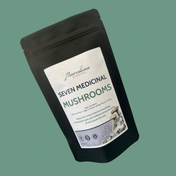
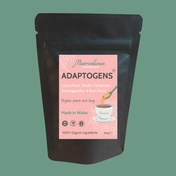
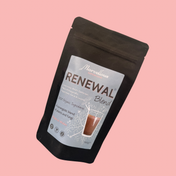
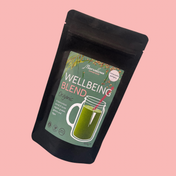
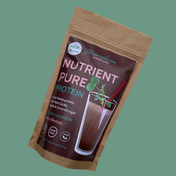
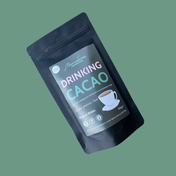
1 comment
This article really nails it! Eating healthy on a budget is totally achievable with a little planning and smart choices. Great tips that will definitely help stretch both the food budget and nutrition!